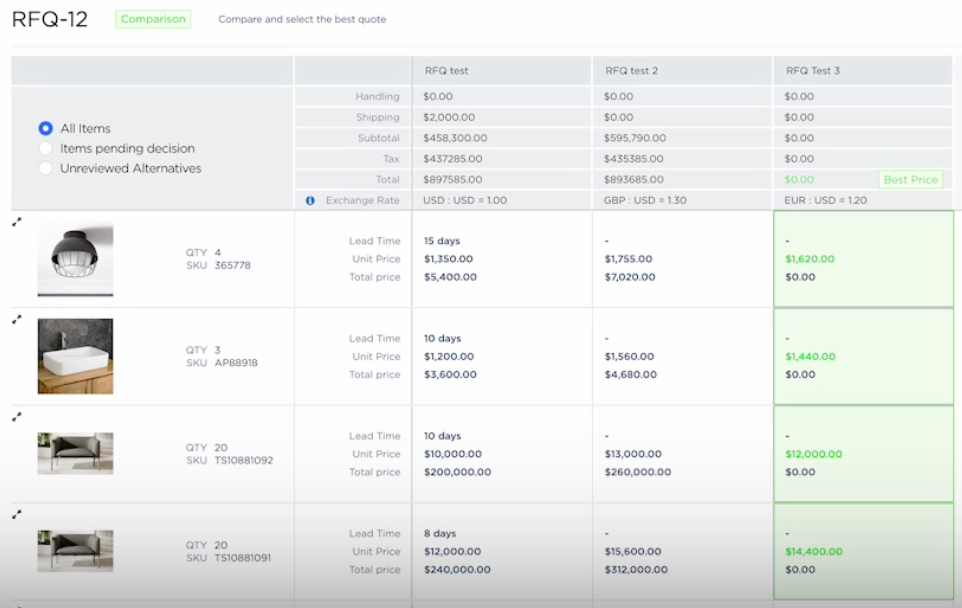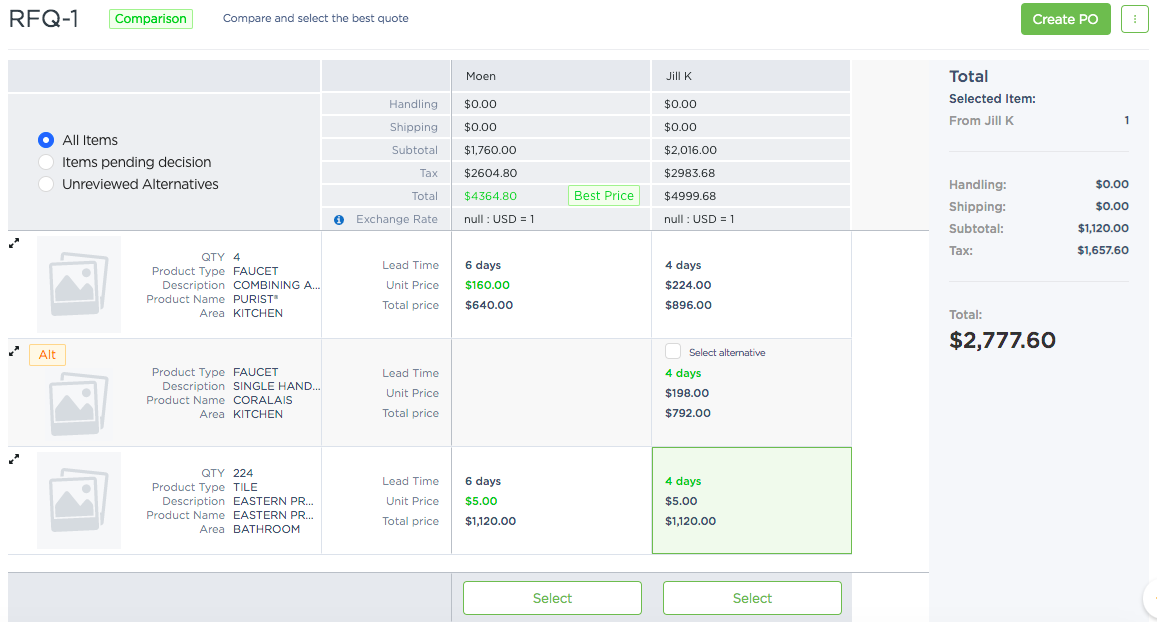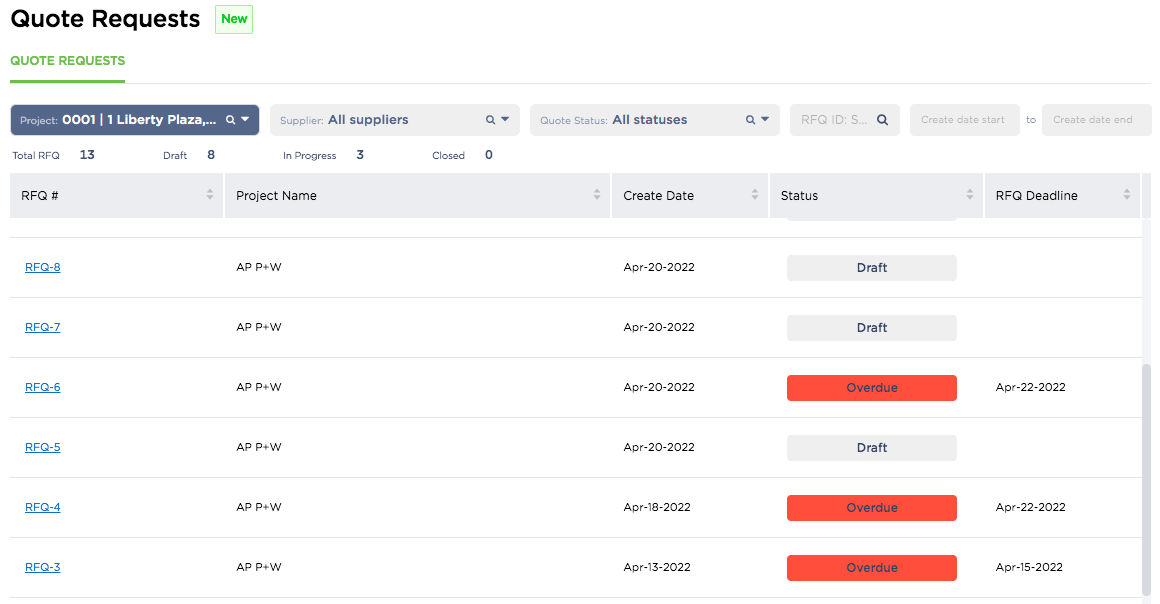
The world of FF&E procurement (Furniture, Fixtures, and Equipment) is both exciting and challenging. From sourcing the perfect furniture pieces to ensuring timely delivery and installation, every step in the procurement process matters. At the heart of this process lies the evaluation of Request for Proposals (RFPs) and Request for Quotes (RFQs). In this blog, we'll explore the strategic aspects of evaluating these documents, and how leveraging the right request for quote software can streamline the process.
1. Understanding the Basics
Before diving into the evaluation process, it's crucial to grasp the fundamentals of RFPs and RFQs:-
RFP (Request for Proposal)
This document is used when the buyer wants detailed proposals from potential suppliers. It typically contains project requirements, specifications, and evaluation criteria. FF&E procurement often involves RFPs as they allow for customization and creativity.
-
RFQ (Request for Quote)
On the other hand, RFQs are simpler. They request suppliers to provide quotations for specific products or services. RFQs are often used when the buyer knows precisely what they need, like standardized furniture pieces in FF&E procurement.
The functional difference between an RFP (Request for Proposal) and an RFQ (Request for Quote) lies in their purpose and level of detail. An RFP is used when a buyer seeks detailed proposals from potential suppliers, often for complex projects or services, while an RFQ is employed when a buyer simply wants suppliers to provide quotes or pricing for specific products or services, typically with well-defined specifications.
Track RFQs and RFPs at scale with Fohlio today.
2. Define Your Objectives
Begin the evaluation process by establishing clear objectives. Determine what you want to achieve with your FF&E procurement. Are you focused on cost-effectiveness, quality, or speed of delivery? Understanding your goals will help you prioritize criteria during the evaluation.
3. Establish Evaluation Criteria
Effective evaluation criteria are the foundation of a successful procurement process. These criteria help you objectively assess and compare the proposals and quotes received from different suppliers. Here's a list of some prime considerations to include in your next evaluation:

- Cost: Price is often a primary consideration, but it shouldn't be the sole focus. Determine whether you're looking for the lowest cost or if you're willing to pay more for added value, quality, or other benefits.
- Quality: Specify the quality standards and specifications required for your FF&E items. This might include durability, materials used, design aesthetics, and any applicable certifications (e.g., safety standards).
- Timing: Evaluate how critical the delivery schedule is for your project. Some projects require quick turnarounds, while others may have more flexible timelines.
- Supplier Capabilities: Assess the supplier's capacity, experience, and track record. Do they have the resources and expertise to handle your project? Check their past projects and references.
- Compliance and Regulations: Ensure that suppliers comply with all relevant regulations, including safety, environmental, and industry-specific standards. Non-compliance can lead to costly delays and legal issues.
4. Leverage Request for Quote Software
Managing and evaluating RFPs and RFQs manually can be overwhelming and time-consuming. This is where request for quote software comes to the rescue. These software solutions offer various benefits:
- Automation: They automate the process of collecting and organizing quotes or proposals, saving you time and reducing errors.
- Centralized Data: All your procurement data is stored in one place, making it easier to compare quotes and track progress.
- Reporting and Analytics: Many RFQ software options offer robust reporting and analytics, helping you make informed decisions.
- Collaboration: Collaborate with team members, suppliers, and stakeholders seamlessly within the software.
Learn more: How to Track Changes, PO Approvals by Thresholds, and Project-Based Templates
5. Scoring and Ranking
Assign a score to each supplier's proposal or quote based on your evaluation criteria. Weight the criteria based on their importance to your project. This scoring system will help you objectively rank the suppliers.
Learn more: How to Build an Approved Vendor List (AVL)
6. Due Diligence
Perform due diligence on your top-ranked suppliers. Contact their references, visit their facilities if possible, and ensure they can deliver on their promises.
7. Negotiation and Final Selection
After the evaluation, enter into negotiations with the top-ranked suppliers. Discuss terms, conditions, and any necessary adjustments to their proposals or quotes. Once negotiations are complete, make your final supplier selection.
Learn more: 3 Purchasing Data Points For Your Next Supplier Negotiation
8. Documentation and Transparency
Keep thorough records of your evaluation process for transparency and future reference. This documentation can be invaluable for audits or if any issues arise during the procurement process.
Learn more: How to Create FF&E Selection Catalogues
Effectively evaluating RFPs and RFQs is a critical step in successful FF&E procurement. By defining your objectives, establishing criteria, and leveraging request for quote software, you can streamline the process, save time, and make informed decisions. Remember, FF&E procurement is not just about getting the best deal; it's about ensuring that the chosen suppliers align with your project's vision and goals. With strategic evaluation, you can achieve a harmonious balance between cost-efficiency and quality in your procurement endeavors.
Expore Fohlio
Learn how to:
- Save days of work with faster specification
- Create firm-wide design standards
- Automate and centralize procurement
- Keep your whole team on the same Page
- Manage product data
- Track budget against cost in real time.
- Prepare for asset valuation
Published Sep 25, 2023

